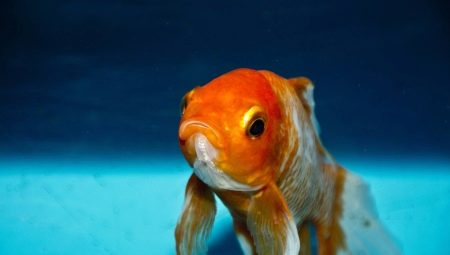The traditional inhabitants of the aquarium recognized goldfish. Their aesthetics does not leave indifferent many aquarists. However, their maintenance and further breeding carries with it some difficulties - from choosing individuals to determining their gender.
A bit of history
Goldfish belongs to the artificially hatched species, is freshwater, belongs to the family of cyprinids, the class of ray-finned fish. In historical documents, the first mention of goldfish found in the VI century BC. uh., so, China is considered the birthplace of fish. The most noble families preferred to have the image of these fish on their emblems.

Some breeds were elevated to the rank of sacred. The history of breeding bet its origin with the Ming Dynasty.
Then, in 1500, they started breeding in Korea, and in 1502 a goldfish conquered Japan, then Indonesia. A in the XVII century it was introduced to Europe and settled in the royal basins as an overseas miracle.
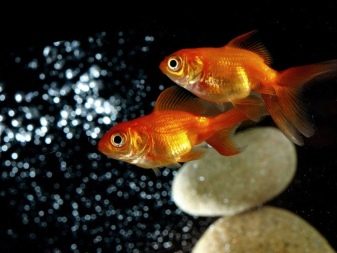
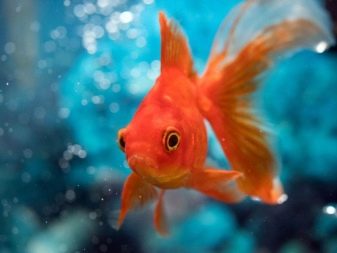
Changing its original appearance in the process of breeding new breeds, the goldfish has not lost the habits of crucian carp. She likes to dig soil, is unpretentious in food, prefers space in an aquarium and clean water.
At the moment, more than 300 species of goldfish are known, so the variations in color and structure of the body, tail and fins are very diverse. Goldfish can have either a regular tail, similar to the tail of the ancestor of this breed - crucian carp, and double. The most widely known are veil tails, oranda and lion head. So, the choice of the inhabitant for the aquarium depends on the preferences of the aquarist.
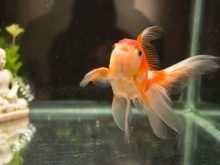
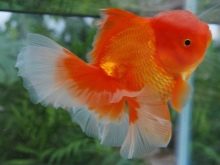
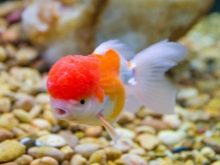
After you have decided on the choice of fish breed, you should decide for what purpose an individual is acquired - for keeping or for keeping with further breeding.
The second option is more difficult, as you should buy fish of a certain gender. Distinguishing a female from a goldfish from a male is a rather difficult task; however, if we take into account the recommendations, then it is completely solvable.
If you purchase fish before puberty, it is recommended that you purchase at least 6 fish of the same species. Upon reaching maturity, you will have the maximum chance of owning fish of both sexes.
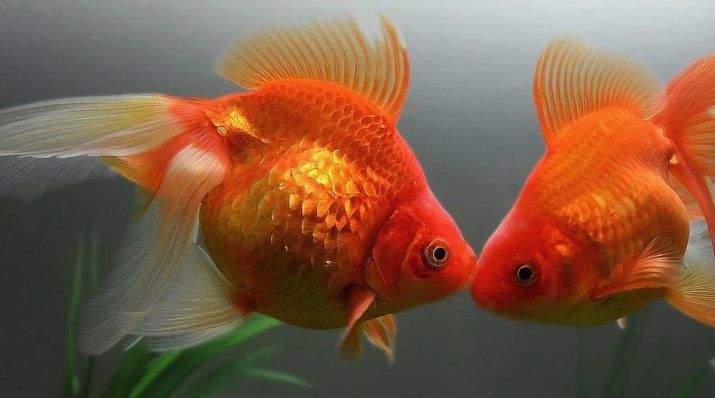
How to determine the gender?
Approximately by the age of 12 months, the fish has puberty. Before reaching this age, it is not possible to distinguish gender. By the beginning of the spawning period, distinctive signs begin to appear in boys and girls.
It should be noted that there are varieties of fish in which the puberty of females occurs after reaching 3 years of age. Therefore, the factor of puberty depends on the variety of your chosen individual.
Although males in this period show maximum activity by chasing females, while pressing them against the walls of the aquarium or decorative objects, a couple of boys can also behave in the absence of females in this way.
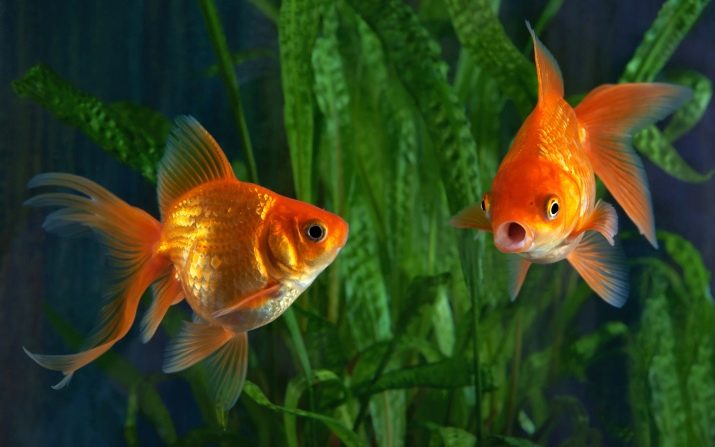
You can recognize males by changes occurring at this time, the appearance of growths. The growths appear in the gills and pectoral fins, have a white color. On the pectoral fins, one can notice small notches, which are called the “saw” due to the similarity with the tool of the same name. Moreover, the fact that the appearance of the growth may not occur in some males is a complication, while it may occur in females.

During spawning, the female abdomen takes a rounded appearance, slightly asymmetrical. At the same time, the body of males looks more elastic and thin.
If you are a happy owner of the Ryukin breed, then determining this moment will be an impossible task, due to the fact that in all individuals of this breed the body has a rounded shape, slightly swollen in appearance.
There are factors that delay the process of puberty: poor diet and volume of the aquarium. So, food should be enriched with protein, and aquarium volumes are calculated based on the ratio of liters per fish.
Key features
Consider the main signs of how to distinguish a boy from a girl, but these recommendations are applicable exclusively to healthy individuals. An unhealthy male will not be able to take care of the female, and an undernourished female will not have roundness, a swollen abdomen can, in turn, be a sign of a disease.
We list the main differences between males and females.
- Body. In a female, the body has a rounded shape, the appearance is slightly swollen. In a male, it is elongated.
- Notches. On the pectoral fins of males there are sawtooth notches.
- Fins. Females are characterized by shorter, rounded fins on the abdomen.
- White growths in males from gills to pectoral fins.
- Behavior. Females are characterized by passivity.
- Anal opening. In females, it protrudes, while resembling an outwardly peculiar outgrowth on the abdomen near the tail of the fish. In males it is involved.
- The anal fin in females is compacted unlike males. By palpation of the female and male, this feature can be revealed.
- Male abdomen has in the most common cases a peculiar scallop extending through the belly to the anus.
- Color. In girls, the color is brighter, but this symptom is not mandatory. There are breeds of goldfish, representatives of which the males have greater brightness.
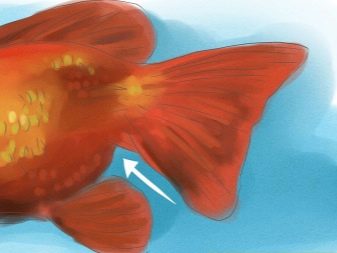
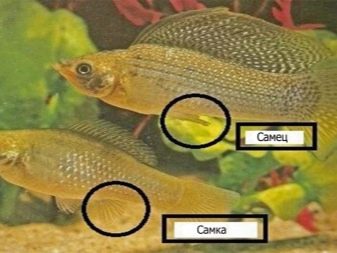
During the spawning period, a female goldfish can sweep up to 3 thousand eggs. The spawning duration is about 6 hours in the morning.
In domestic conditions, spawning can be year-round, however, in this case, fish-producers are depleted. Therefore, at the end of spawning, it is recommended to give the fish a rest by settling in separate aquariums.
So, Based on the above distinguishing features, you can distinguish between a male and a female and breed goldfish. For breeding goldfish you will need 2-3 males, a female, a spawning aquarium with a volume of about 30 liters, aquarium plants, a good filtration and aeration system, as well as a temperature regulator. Further breeding also carries with it difficulties, but it should be remembered that the key to healthy offspring is good nutrition and fresh water.
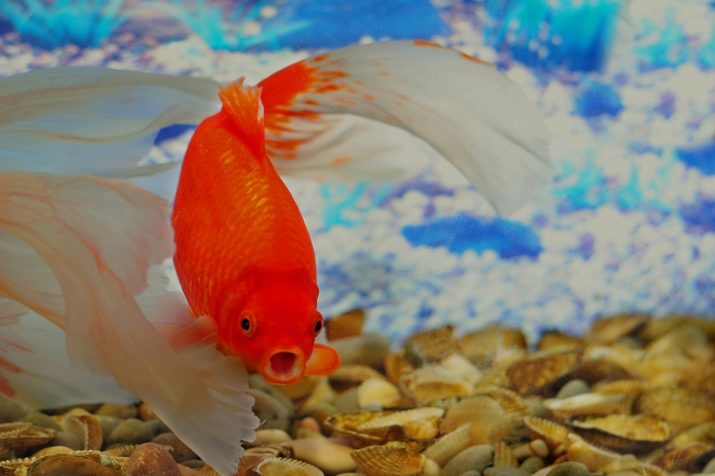
You can learn more about the differences between a female and a male goldfish in the video presented.
